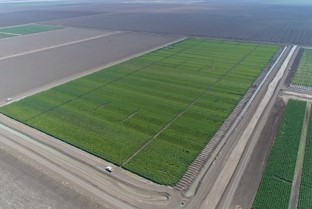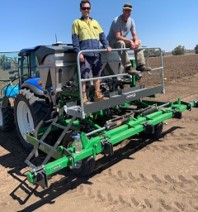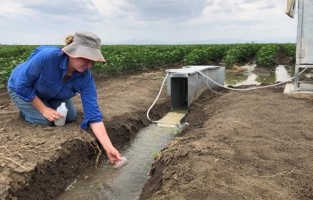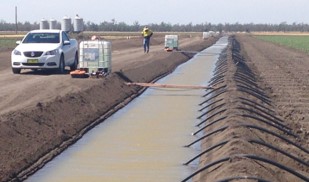
MPfN - enhancing nutrient use in cotton
The issue
 Substantial amounts of nitrogen (N), sourced from both soil organic matter mineralisation and fertiliser, may be lost from irrigated cotton-producing soils. Soil phosphorus (P) may also be depleted under long-term irrigated farming systems. Strategies of fertiliser and irrigation management are needed to address both short-term nutrient losses and long-term depletion of soil fertility.
Substantial amounts of nitrogen (N), sourced from both soil organic matter mineralisation and fertiliser, may be lost from irrigated cotton-producing soils. Soil phosphorus (P) may also be depleted under long-term irrigated farming systems. Strategies of fertiliser and irrigation management are needed to address both short-term nutrient losses and long-term depletion of soil fertility.
Objective
To increase understanding of the relationships between soil and fertiliser N & P supply, fertiliser placement, fertiliser timing, and irrigation strategy to achieve greater N use efficiency (NUE) and improved P soil nutrition.
What we are doing
 Four seasons of field experiments at the Australian Cotton Research Institute, Narrabri investigating the impact of irrigation scheduling and N and P management strategies on cotton productivity and nutrient use efficiency.
Four seasons of field experiments at the Australian Cotton Research Institute, Narrabri investigating the impact of irrigation scheduling and N and P management strategies on cotton productivity and nutrient use efficiency.- Three seasons of on-farm case-studies/trials near Moree, Gunnedah and Narromine.
- Testing of archived soils sampled from previous cotton experiments to determine whether soil P has declined due to cropping or increased with fertiliser management.
Outputs and/or outcome
- N Runoff loss during irrigation can be > 20% of applied N. This loss can be reduced by split-N or using polymer-coated urea.
- N volatilisation from water-run ammonia can >23% applied N
- Split N application increased yield compared to all pre-plant.
- Soil P declines throughout the profile if not fertilised, but accumulates at the surface where P fertiliser is applied.
- Yields were optimised when N and P applied, and irrigation was more frequent.
- High N fertiliser rates increased biomass but not lint yield



Partners or collaborators
Cotton Research and Development Corporation,
Australian Department of Agriculture, Water and Environment
CSIRO,
University of Queensland,
University of Melbourne,
University of New England

